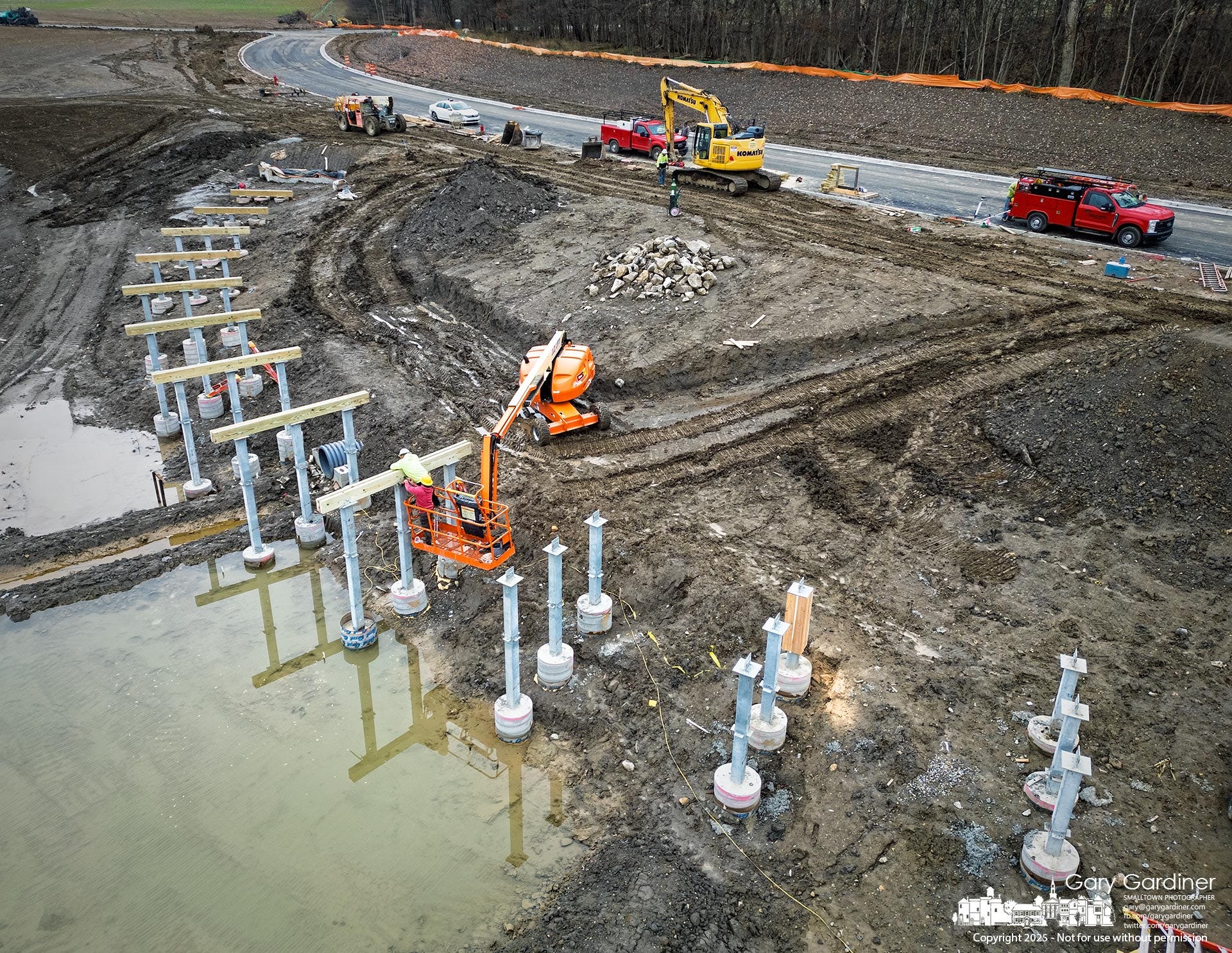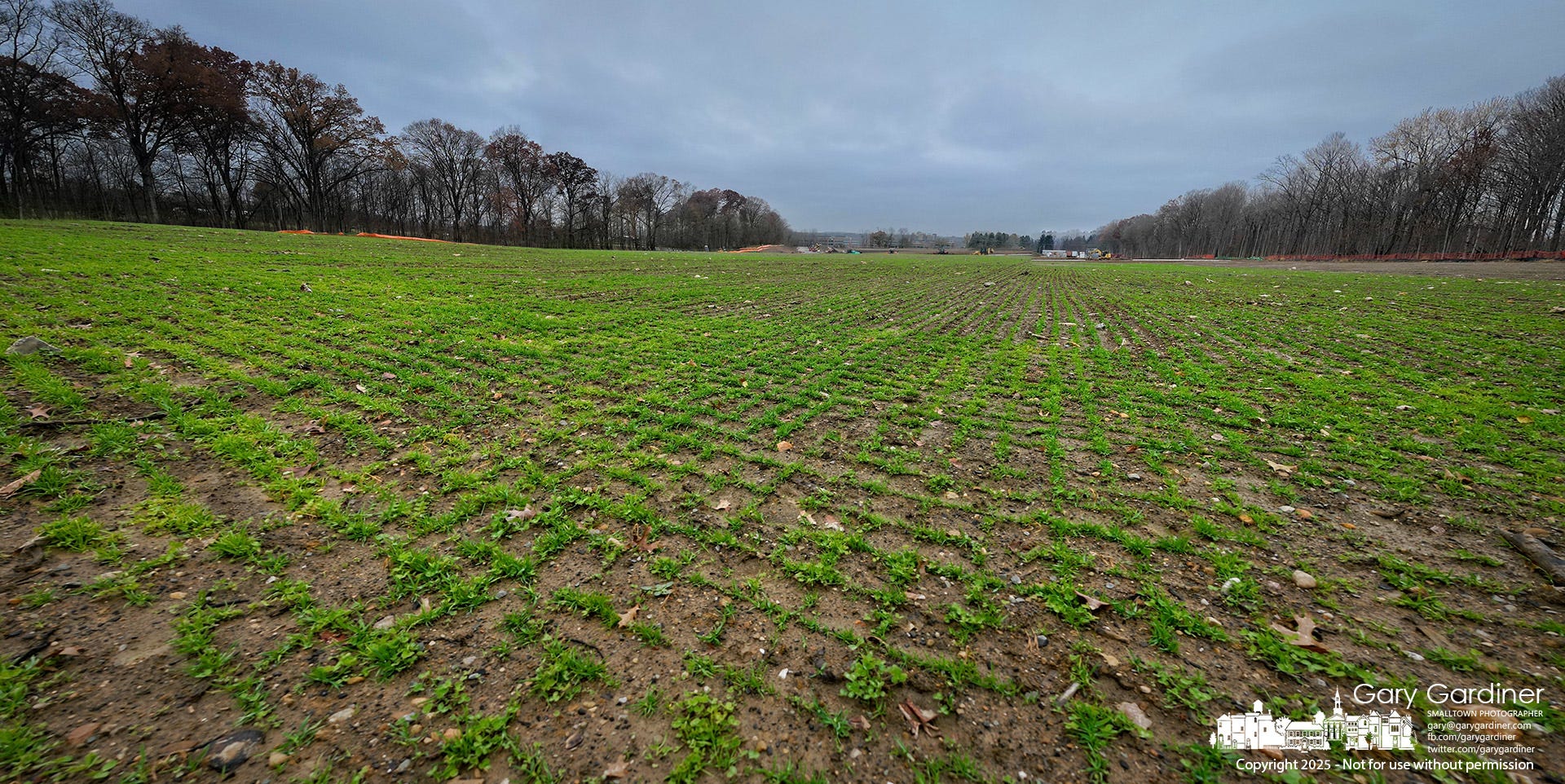East of Africa Update. Walkway Taking Shape, Concrete Donuts, and Hay Fields Showing Green
Construction crews are moving ahead on the boardwalk planned for the largest holding pond in the East of Africa project, where rows of concrete pilings now trace the outline of the future walkway. The work, visible from the service road but not from Africa Road, includes setting steel brackets and horizontal beams over the water while excavators and support trucks stage materials on higher ground.
The boardwalk has taken on added significance after public comment during the project’s planning stages criticized the city for clearing trees and removing a nearby pond to expand development space. Site engineers say the new walkway is intended to restore some of the access and natural character that residents worried would be lost. While the structure plays a necessary role in the stormwater system, it is also designed to bring visitors closer to the water, offering a safer and more welcoming way to experience the area once the broader development opens.
The pond itself is part of the project’s stormwater network. When construction is complete, it, along with several other ponds, will collect and hold runoff from roofs, parking areas, and landscaped sections of the site. Engineers say the holding pond will slow the movement of stormwater and improve water quality before it moves downstream into Alkyre Run, making it a critical piece of the development’s environmental plan.
Recent rain left the work zone muddy, but crews continued installing supports, grading soil, and working along the pond’s edge. As more pylons go in, the boardwalk's shape is becoming clearer, marking the shift from groundwork to a more visible stage of construction.
Road crews spent Monday removing the asphalt collars around eight manholes on Africa Road and Polaris Parkway, a process that required rerouting traffic around each work zone. Using a hydraulic coring machine mounted to a compact loader, workers cut clean circular sections of pavement, lifting out the old asphalt to make way for stronger concrete replacements.
The new concrete rings will form sturdier barriers around the manholes, reducing wear from traffic and lowering the chance of future pavement failures. Crews used water to cool the cutter and control debris as each section was removed, creating brief slowdowns but keeping the work moving steadily from one location to the next.
The first signs of hay are beginning to show across portions of the East of Africa project, where rows of green shoots now break up the expanse of bare soil. The planting is part of a plan to keep sections of the property in active agricultural use even as the larger 88-acre site is converted from farmland into a business development zone.
City officials say maintaining limited agricultural activity allows the property to retain its Current Agricultural Use Value tax classification, which reduces tax costs during the multi-year build-out. The hay fields are expected to grow alongside ongoing construction work, creating a mix of emerging development and preserved farmland on the site.
Most of the surrounding tree line has been left in place, though recent clearing in other areas drew public criticism during early planning discussions. The hay plantings offer a contrast to the heavier construction zones elsewhere on the property, providing a reminder of the land’s agricultural roots as the project moves forward.
The Westerville News is a reader-supported publication by Gary Gardiner, a lifelong journalist who believes hyper-local reporting is the future of news. This publication focuses exclusively on Westerville—its local news, influence on Central Ohio, and how surrounding areas shape the community.
Explore more hyper-local reporting by subscribing to The Hilliard Beacon, Civic Capacity, Marysville Matters, The Ohio Roundtable, Shelby News Reporter, This Week in Toledo, and Into the Morning by Krista Steele.







The natural character WAS lost. These attempts to restore fall short.
Just curious, if the concrete is better around the manhole, why did they just dig up all the concrete around manholes on County Line Rd and replace it with asphalt???